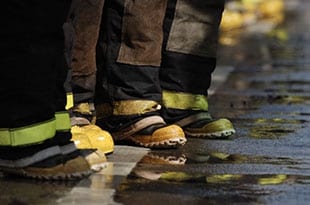Hypothermia in Florida?
December 10, 2012

Cold weather dangers are real even in temperate regions. Here are some things to watch for to protect your Florida workers.
Hypothermia
Prolonged exposure to the cold causes the body to lose needed heat energy. Early symptoms include shivering, fatigue, loss of coordination and confusion. As time goes on, shivering stops and other symptoms develop, including blue skin, dilated pupils, slowed pulse, slowed breathing and loss of consciousness.
In water temperatures even up to 70°F, “immersion hypothermia” can develop quickly. Water conducts heat away from the body 25 times faster than air, and survival may depend on having a flotation device and a way to signal rescuers.
If a worker develops hypothermia:
1. Alert 911.
2. Move the worker into warm shelter and remove wet clothing.
3. Warm the center of the body first (chest, head, neck and groin) with an electric blanket, or use skin-to-skin contact under loose layers of blankets.
4. Warm, non-alcoholic beverages may help, but do not try to administer if worker is unconscious.
5. After the worker’s body temp comes up, keep him or her dry and covered with a warm blanket.
6. If worker has no pulse, begin CPR.
Trench foot
Trench foot can occur at temperatures as high as 60°F when feet are exposed to cold, wet conditions for prolonged periods. To prevent heat loss, the body constricts blood vessels to shut down circulation and skin tissue begins to die. Symptoms include numbness, cramps, swelling, blisters, bleeding and gangrene.
If a worker develops trench foot, instruct him or her to:
1. Remove wet shoes and socks.
2. Allow feet to dry.
3. Stay off feet to avoid further damage.
Chilblains
Repeated skin exposure to temperatures as high as 60°F can cause permanent damage to capillary beds located in the cheeks, ears, fingers and toes. Symptoms include redness, itching, blistering, inflammation and in severe cases, ulceration.
If a worker develops chilblains, instruct him or her to:
- Avoid scratching and warm the skin gradually.
- Use corticosteroid creams to relieve itching and swelling.
- Keep blisters and ulcers clean and covered.
